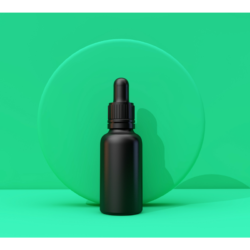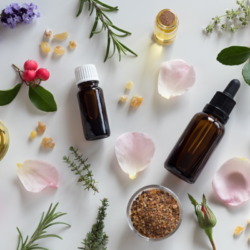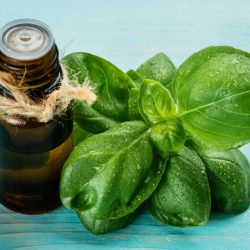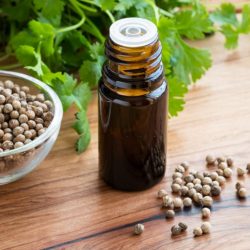Discover Tea Tree essential oil, this natural treasure that has been revered for centuries for its properties properties. Native to Australia and nicknamed “the green gold of the fifth continent”, this essential oil is renowned for its effectiveness against a multitude of ailments. From its antiseptic and antibacterial benefits to its revolutionary cosmetic uses, dive into the fascinating world of Tea Tree. In this article, we explore its rich history, unique characteristics and applications in everyday life. Follow us on a journey to the heart of the secrets of this miraculous natural essence.
What secrets does Tea Tree essential oil hold?
Melaleuca alternifolia is native to New South Wales in Australia. The Bundjalung aborigines have been using the leaves to cure a variety of ailments for a very long time. Unfortunately, very little of this ancestral knowledge has survived. In fact, huge swathes of aboriginal culture disappeared with these populations, under the deleterious influence of the white man. Thetea tree is a silent witness to this disaster.
It is also known as thegreen gold of the fifth continent, Australia.
How has tea tree been used in modern times?
Linnaeus named the plant Melaleuca for the first time in 1767. He knew it from Rumphius‘ description.
Tea tree leaves came to Europe thanks to the English navigator James Cook around 1770, who found them in the islands of the New Zealand archipelago and brought them back to Europe. The aborigines were already using them to make a kind of “tea”. So, in the absence of real tea, the crew came to appreciate the infusions made from tea tree leaves. The aborigines also used these leaves to make poultices for wounds. They boiled the leaves and drank them as a tea infusion. They also crushed the leaves and applied them to their wounds. The aborigines also bathed in a lagoon in which the melaleuca leaves fell and macerated. They bathed there to cure any minor problems they might have.
It was then given the English name of tea tree. The name has stuck ever since, even though theteatree belongs to a botanical family that is strictly distinct from that of the Asian tea plant.
Captain Cook does not seem to have been interested in the therapeutic virtues of the tea tree. It was not until 1920-1923 that a whole series of Australian studies were carried out on its essential oil. These studies conducted tests on numerous strains of bacteria.
How has knowledge about tea tree evolved in modern times?
Maiden and Beutche subsequently described two different varieties. In 1924, Cheel considered that the differences between the two were significant enough to distinguish two species: M. linariifolia and M. alternifolia.
In the 1920s, Dr Penfold discovered that the essential oil obtained from distilling the leaves was eleven times more antimicrobial than the leading antiseptic of the time: phenol.
During the Second World War, the effectiveness of melaleuca oil was so well recognised that every Australian soldier automatically had some in his first-aid kit. At the time, tea-tree growers and harvesters were not required to serve in the army. Australian soldiers used tea tree oil to treat their wounds.
In the 1960s, in his book L’aromathérapie, se soigner par les huiles essentielles, French doctor Jean Valnet mentions niaouli and cajeput, but curiously omits tea tree oil, which is all the more surprising given that today this essential oil is considered a must-have alongside fine lavender oil and lemon oil.
But it’s been a long road from traditional use over thousands of years to the modern therapeutic use of this essential oil by the descendants of the colonists! The therapeutic value of this substance led to the large-scale cultivation of the shrub that produces it. The tea tree was therefore cultivated on many Australian hectares, and has even spread to other countries: India, Malaysia, New Caledonia, South Africa and Madagascar.
What are the characteristics of the tea tree?
The tea tree, whose botanical name is Melaleuca alternifolia, belongs to the Myrtaceae family.
What is its habitat?
Small in size, the tea tree generally measures 3 to 4 metres (reaching 10 metres in the wild). It is native to Australia, mainly in the eastern regions of New South Wales and Queensland.
Belonging to the Myrtaceae family, it is a cousin of eucalyptus and other melaleucas such as niaouli and cajeput. The tea tree has a marked preference for coastal and marshy areas, as well as wetlands where its shoots emerge when the main trunk disappears. This disappearance is not easy because of its resistant wood, which is practically rot-proof, and its thick, fireproof bark. This bark comes off in thin strips. This should in no way be taken to mean that this tree, often described as a shrub, is fragile or frail-looking. Its resistance to parasites confirms the powers of the tea tree. It is therefore important not to underestimate its value because of its modest size.
What are its botanical attributes?
Its curved branches, adorned with feathery foliage, give an impression of grace and lightness. However, if you look closely, you’ll see that the tea tree’s linear, lanceolate leaves are actually very tough. Numerous petrol glands are visible on their surface. If you crumple them up suddenly, they give off a powerful aromatic scent. This scent is at odds with the apparent delicacy of this frail-looking tree. The highly fragrant white flowers, with their many stamens, reinforce this impression.
In fact, its small, linear leaves are arranged in an alternating pattern, resembling needles. They have visible petrol glands that release a strong odour when broken. The flowers of the tea tree are in the form of white variegated spikes and generally bloom between mid-October and November in Australia. The fruits produce numerous tiny seeds. Although in the wild it thrives on marshy plains, tea tree essential oil is often grown on crops.
What are the uses of tea tree essential oil?
Tea tree oil is often used as a universal solution in aromatherapy.
How does it work?
The biochemical composition of tea tree essential oil comprises :
- Monoterpenes (40-45%): gamma-terpinene, alpha-terpinene
- Monoterpenols (45-50%): terpinen-4-ol, alpha-terpineol
- Oxides (3-5%): 1,8 cineole
- Other biochemical constituents: sesquiterpenes, sesquiterpenols
Terpinen-4-ol is a powerful anti-infective, anti-staphylococcal, anti-candidosis and antiviral agent. Its presumed mode of action involves the hydrocarbon structure and lipophilicity of terpenes. They cause lysis and loss of functional integrity of the bacterial cell membrane. They cause leakage of intracellular material (potassium). Homeostasis cannot be maintained. Cellular respiration is inhibited. Monoterpenols have broad-spectrum antiviral, antifungal and anti-infectious properties. These molecules are less aggressive than phenols, making tea tree essential oil easier to use but just as effective.
The essential oil is considered “eubiotic”, meaning that it “promotes life”. It only kills bad bacteria, without destroying the commensal flora. It also acts in synergy with antibiotics.
This essential oil has strong antioxidant properties thanks toalpha-terpinene and gamma-terpinene . The 1,8-cineole used on its own shows little antibacterial activity. This molecule potentiates the action of the terpinenes.
What are the indications for this essential oil?
Tea Tree essential oil has an impressive range of scientific and energetic properties. In scientific terms, it is distinguished by :
- Antibacterial with a broad spectrum of action, antiseptic, anti-infectious with great versatility: Thanks to its concentration of terpinene-4-ol, Tea Tree essential oil effectively fights bacteria by penetrating their membranes, weakening them and causing them to be eliminated. It inhibits the growth of a range of bacteria, including Escherichia coli, Staphylococcus aureus and Cutibacterium acnes.
- Anti-parasitic and anti-fungal: Aromatic molecules such as terpinen-4-ol, γ-terpinene and α-terpinene give Tea Tree essential oil remarkable anti-fungal effectiveness. It disrupts the membranes of certain fungi, eliminating them. It is particularly effective against fungi of the Candida and Malassezia genera, which cause mycosis.
- Antiviral: Tea Tree’s main components have a virucidal action, preventing viruses from penetrating host cells. Studies have shown it to be effective against Herpes simplex viruses.
- Immune stimulant: Tea Tree modifies the production of inflammatory mediators. It promotes expression of the CD11b receptor, thereby boosting the body’s immune response.
- Physical, cardiac and mental tonic: Tea Tree essential oil has stimulating properties that act on physical and mental vitality.
- Skin protector during radiotherapy sessions: Thanks to its anti-inflammatory and slightly antioxidant properties, Tea Tree can be used to prevent radiodermatitis.
Scientific studies on the antifungal activity of Tea Tree :
- Antifungal properties: Tea Tree oil is recognised for its antifungal properties, particularly against fungi of the Candida genus. Studies carried out by K.A. Hammer and his team in 2004, and by S.D. Cox et al. in 1999, demonstrated that 0.25% Tea Tree oil can destroy the membranes of fungi, particularly Candida albicans, Candida glabrata and Saccharomyces cerevisiae, in just 30 minutes. The cyclic monoterpenes present in the oil, such as γ-terpinene and α-terpinene, play a key role in this process.
- Inhibition of fungal growth: A study by K.A. Hammer et al. published in 2000 found that 0.25% Tea Tree oil inhibited germ tube formation in Candida albicans, preventing the fungus from growing.
- Inhibition of Fungal Respiration: Research by K.A. Hammer in 2004 and S.D. Cox in 1999 showed that 0.125% Tea Tree oil completely inhibits the respiration of Candida albicans. This inhibition is due to alteration of the fungal membrane and depolarisation of mitochondrial membranes.
Tea Tree essential oil is also used for energy purposes:
- Stimulating and neurotonic: Tea Tree essential oil stimulates vital energy and promotes mental clarity.
- Rebalancing: It helps to rebalance physical and mental energies.
These multiple properties make Tea Tree essential oil an invaluable asset in a variety of traditional indications, including treating oral and dental infections, ENT and lung infections, urinary tract and gynaecological infections, skin infections, intestinal parasites, lymphatic and venous problems, and preventing burns caused by radiotherapy.
Cosmetic uses: natural beauty
In cosmetics, Tea Tree essential oil has a wide range of applications, notably for its purifying properties for the skin and toning properties for the scalp. It is ideal for :
- Purifying the skin: Tea Tree essential oil is effective for problem skin. It is one of the recommended treatments for acne and skin infections. It helps regulate sebum production and disinfect the skin, promoting better skin health.
- Intimate hygiene: Thanks to its antiseptic properties, it can be safely used in intimate hygiene gels. It helps maintain a favourable microbiological balance.
- Deodorant: Tea Tree essential oil can also be used in the formulation of natural deodorants. Its antibacterial action helps prevent unpleasant body odours.
- White teeth: It can help whiten teeth and ensure optimum oral hygiene in natural toothpaste recipes.
- Oily hair: It tones the scalp and regulates sebum production.
These cosmetic uses demonstrate the versatility of Tea Tree essential oil in the field of beauty and personal hygiene.
What dosage should I choose?
The most common dosage is applied to the skin. It can also be diffused for an airborne antiseptic effect. A health professional should check that tea tree is taken orally, as the epileptogenic dose is not very high.
- To treat pimples, sores or acne blemishes, you can apply Tea Tree directly to the area concerned, using a cotton bud. If the area is larger than a pimple, the essential oil should be diluted 20%.
- For fungal infections of the skin, vagina, nails or any other skin infection, topical application of a dilution of Tea Tree essential oil in a vegetable oil is effective. Apply this solution to the affected area.
- During radiotherapy sessions, you can prevent skin burns by applying one drop of Tea Tree essential oil and one drop of Niaouli essential oil directly to the irradiated skin area. Do this one to two hours before the session and one to two hours afterwards.
What is the opinion of the European health authorities?
To enlighten readers further on the reliability and safety of Tea Tree essential oil, let’s now explore the perspectives and recommendations of the European health authorities on this natural product.
Precautions and advice for use: Use in complete safety
When using Tea Tree essential oil, it is essential to take into account certain important precautions and contraindications.
- It is essential to follow the recommended doses when using this essential oil, to avoid any potential health risks. People with epilepsy should absolutely consult a health professional before using Tea Tree essential oil, as high doses may present an epileptogenic risk.
- In the event of an overdose, it is important to note that Tea Tree essential oil may temporarily cause confusion and a loss of motor coordination. This oil should therefore be used with caution and the recommended doses should not be exceeded.
- The use of this product in children under the age of 12 has not yet been established. It must not be ingested or inhaled, and contact with the eyes and ears must be avoided. If symptoms worsen during use of this medicinal product, medical advice should be sought. Do not use on burns. Medical advice should also be sought in the event of fever or worsening signs of skin infection. In the presence of severe acne or for the treatment of a fungal infection, the supervision of a qualified health professional is essential.
What does the EMA say?
The HMPC recognises 4 indications for Tea Tree, based on long-standing use in Europe. The first is the treatment of small superficial wounds and insect bites. It is also effective for treating small boils (skin cysts) and mild acne. It is also known to relieve itching and irritation caused by mild skin fungus. It can also be used as a symptomatic treatment for minor inflammation of the oral mucosa.
The HMPC has also studied the adverse reactions reported. Adverse skin reactions have been reported, including burning, mild itching, irritation, tingling, redness, oedema and allergic reactions. The frequency of these reactions has not been documented. In addition, a skin reaction similar to a burn has been observed, although its frequency is rare (<1/1,000). In the event of other adverse reactions not mentioned above, it is strongly recommended that you consult a doctor.
Quiz: Tea Tree essential oil, its history and benefits
To test your knowledge acquired in this fascinating article on Tea Tree essential oil, here’s a short quiz. Challenge yourself to answer these questions and find out how much you’ve learned about the secrets and benefits of this natural treasure.
- Where does Tea Tree essential oil come from? A) South Africa B) Australia C) India
- What is the main component of Tea Tree essential oil that has antifungal properties? A) 1,8 cineole B) Terpinen-4-ol C) Linalool
- What is Tea Tree oil used for in cosmetics? A) Skin hydration B) Anti-ageing C) Acne treatment
- What unique property does Tea Tree oil have compared to other essential oils? A) It is produced exclusively in Australia B) It only kills bad bacteria, without destroying commensal flora C) It was discovered by Europeans in the 18th century
- How was Tea Tree essential oil used during the Second World War? A) As a perfume for soldiers B) In the first-aid kits of Australian soldiers C) As a cooking oil in military rations
Answers:
- B) Australia
- B) Terpinen-4-ol
- C) Treatment of acne
- B) It only kills bad bacteria, without destroying commensal flora
- B) In the first-aid kits of Australian soldiers
Readers, did you find this quiz on Tea Tree essential oil interesting? We’d love to know your score! Share your results in the comments to see how much you’ve learned and to exchange ideas with other natural benefits enthusiasts. Don’t hesitate to chat and ask additional questions, it’s a great way to keep learning together!
References
https://pubmed.ncbi.nlm.nih.gov/22998411/
https://pubmed.ncbi.nlm.nih.gov/28818687/
https://pubmed.ncbi.nlm.nih.gov/27388769/







